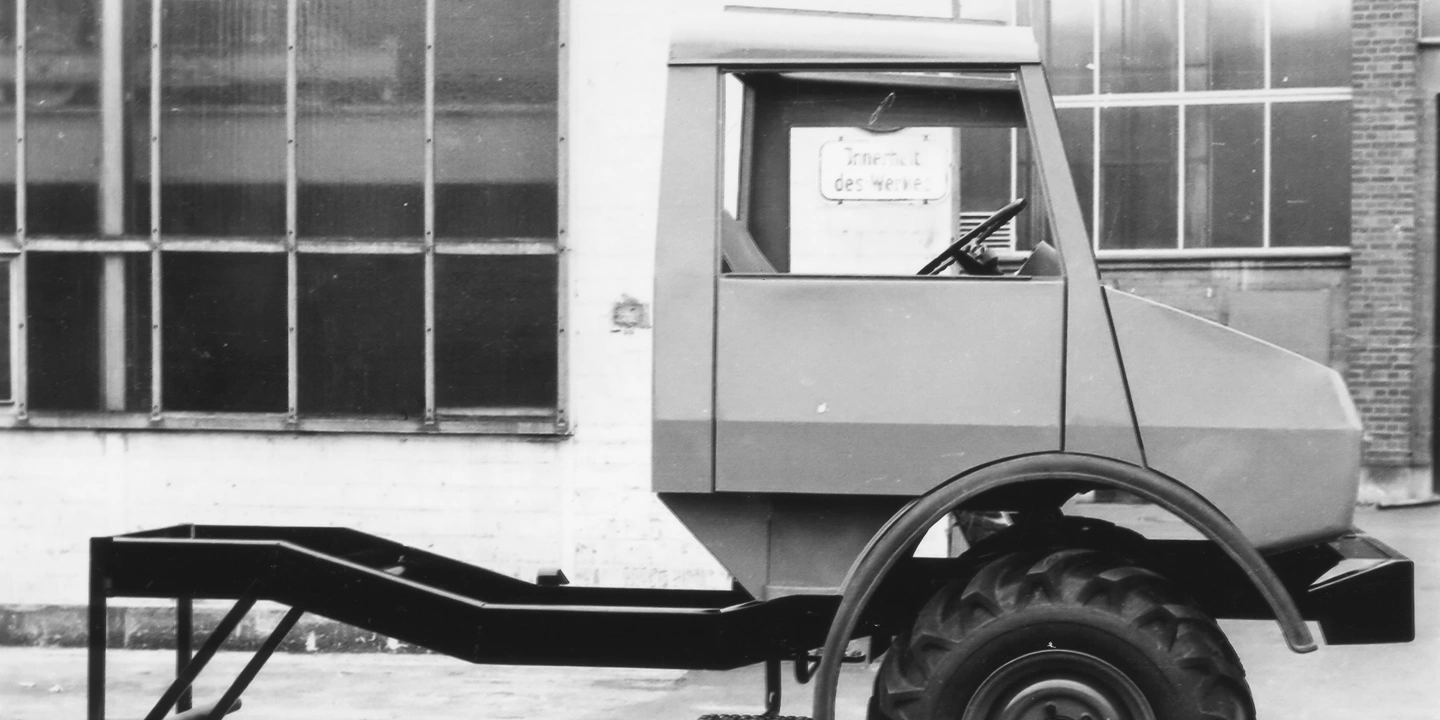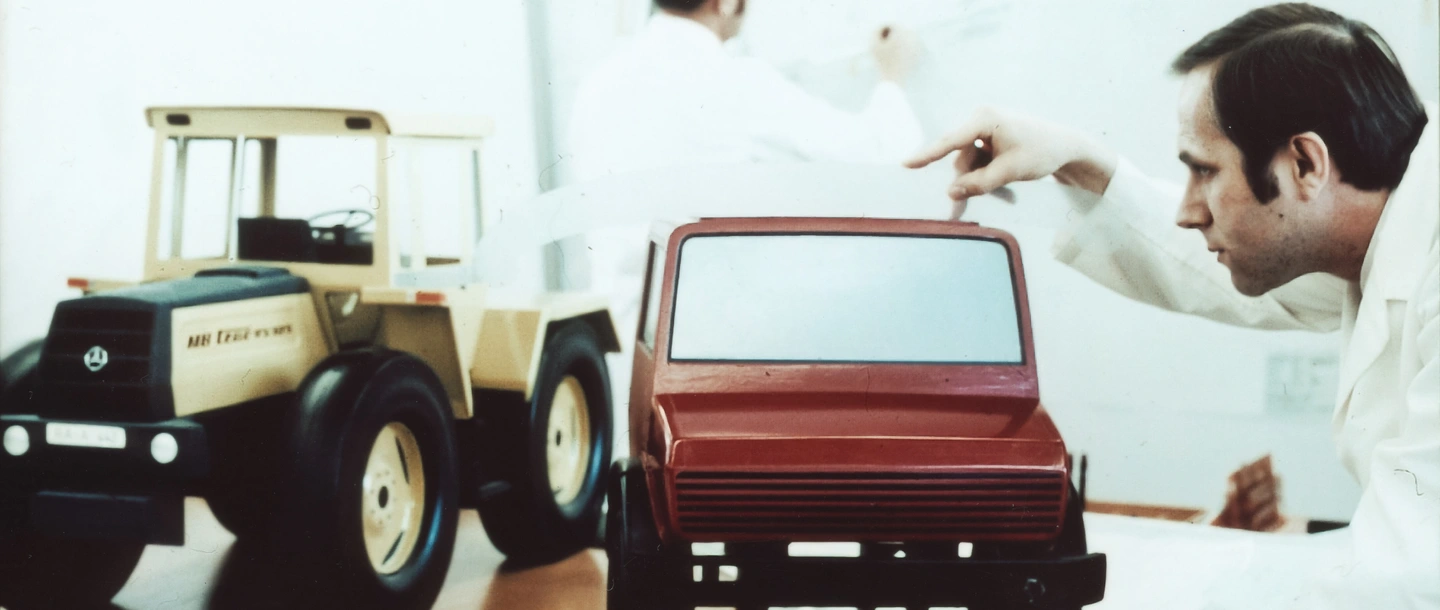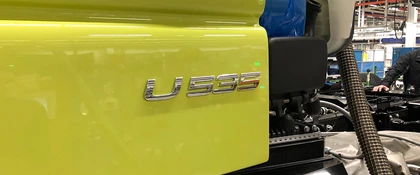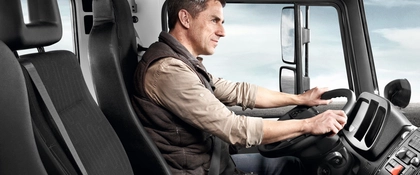How the Unimog's cab got a general overhaul.
At the beginning of the 1970s, there was a rethink: until then, the cabs of the Unimog series had been subordinate to the functional purpose of the vehicle. Of course, this meant sacrificing space and comfort. Thus, in the run-up to the new Unimog series 424, 425 and 435, a completely different cab design was developed.
Design, space and ergonomics shaping a new era.
The priorities of the design process were improved visibility, more space, good ergonomics regarding the arrangement of the controls and optimised accessibility of the components for maintenance and repair purposes. The new cab was to be used for multiple series and be produced in different versions to cover all applications. For the first time, no open version with a folding soft top was available and this model was only manufactured in small quantities for military vehicles much later on.

The new generation of cabs has been modernised several times over the course of its construction period, but its basic features have remained the same. It is still used today in the 437.4 UHE extreme off-road series, although almost every single part has been modified over the construction period. When it was first launched, one innovative feature was that it could transport up to three people. This was followed by the crew cab offering space for up to seven passengers. In addition to proving very popular with customers, the new cab won the German “Gute Form” (good design) Federal design award in 1977. It was created in close cooperation between the Gaggenau development team and the Design Centre at the Sindelfingen plant.



